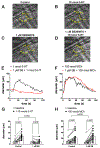5-HT7 receptors mediate dilation of rat cremaster muscle arterioles in vivo
- PMID: 37204759
- PMCID: PMC11409460
- DOI: 10.1111/micc.12808
5-HT7 receptors mediate dilation of rat cremaster muscle arterioles in vivo
Abstract
Objective: Serotonin (5-HT) infusion in vivo causes hypotension and a fall in total peripheral resistance. However, the vascular segment and the receptors that mediate this response remain in question. We hypothesized that 5-HT7 receptors mediate arteriolar dilation to 5-HT in skeletal muscle microcirculation.
Methods: Cremaster muscles of isoflurane-anesthetized male Sprague-Dawley rats were prepared for in vivo microscopy of third- and fourth-order arterioles and superfused with physiological salt solution at 34°C. Quantitative real-time PCR (RT-PCR) was applied to pooled samples of first- to third-order cremaster arterioles (2-4 rats/sample) to evaluate 5-HT7 receptor expression.
Results: Topical 5-HT (1-10 nmols) or the 5-HT1/7 receptor agonist, 5-carboxamidotryptamine (10-30 nM), dilated third- and fourth-order arterioles, responses that were abolished by 1 μM SB269970, a selective 5-HT7 receptor antagonist. In contrast, dilation induced by the muscarinic agonist, methacholine (100 nmols) was not inhibited by SB269970. Serotonin (10 nmols) failed to dilate cremaster arterioles in 5-HT7 receptor knockout rats whereas arterioles in wild-type litter mates dilated to 1 nmol 5-HT, a response blocked by 1 μM SB269970. Quantitative RT-PCR revealed that cremaster arterioles expressed mRNA for 5-HT7 receptors.
Conclusions: 5-HT7 receptors mediate dilation of small arterioles in skeletal muscle and likely contribute to 5-HT-induced hypotension, in vivo.
Keywords: 5-HT7 receptors; arterioles; serotonin; skeletal muscle; vascular smooth muscle; vasodilation.
© 2023 The Authors. Microcirculation published by John Wiley & Sons Ltd.
Conflict of interest statement
Figures





References
-
- Alsip NL, Harris PD. Receptor mediation of microvascular responses to serotonin in striated muscle. Am J Physiol 261: H1525–1533, 1991. - PubMed
-
- Alsip NL, Harris PD. Serotonin-induced dilation of small arterioles is not mediated via endothelium-derived relaxing factor in skeletal muscle. Eur J Pharmacol 229: 117–124, 1992. - PubMed
-
- Centurion D, Glusa E, Sanchez-Lopez A, Valdivia LF, Saxena PR, Villalon CM. 5-HT7, but not 5-HT2B, receptors mediate hypotension in vagosympathectomized rats. Eur J Pharmacol 502: 239–242, 2004. - PubMed
Publication types
MeSH terms
Substances
Grants and funding
LinkOut - more resources
Full Text Sources

